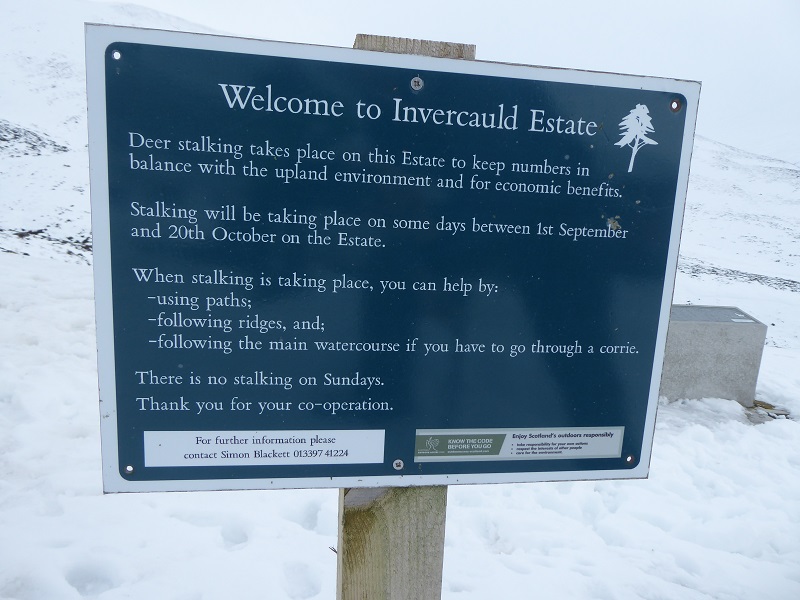
On Sunday, returning early after a short ski tour over the Cairnwell in a white out, we stopped at the Devil’s elbow, where I had the pleasure of reading an estate sign which used the National Access Forum’s recommended template and form of words as set out in their Guidance on Deer Stalking and Public Access (see here):
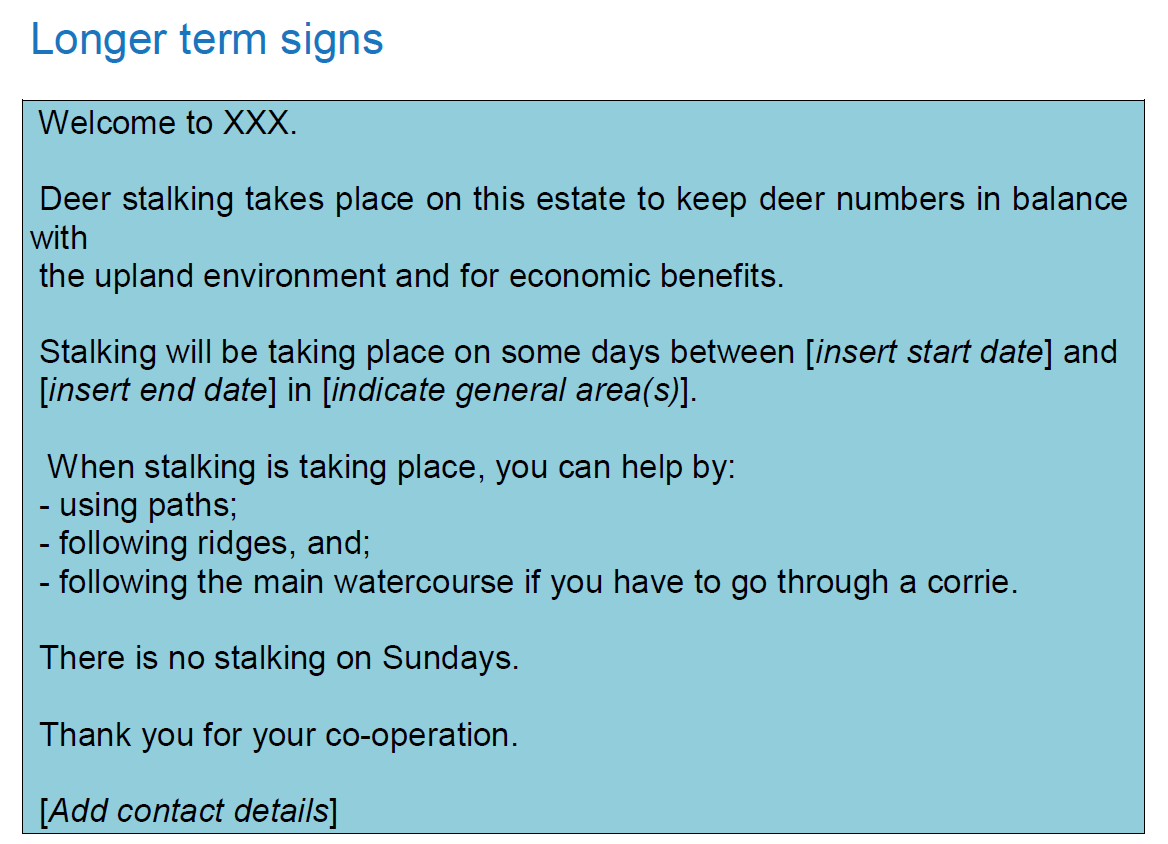 Such signs are very rare, even if not unique sight, in our National Parks. Bravo Invercauld was my reaction!
Such signs are very rare, even if not unique sight, in our National Parks. Bravo Invercauld was my reaction!
Unfortunately other signs which bear the National Park Authority logo and convey very different messages to the public, most notably the Welcome to the Moor signs, are proliferating in the Cairngorms National Park:
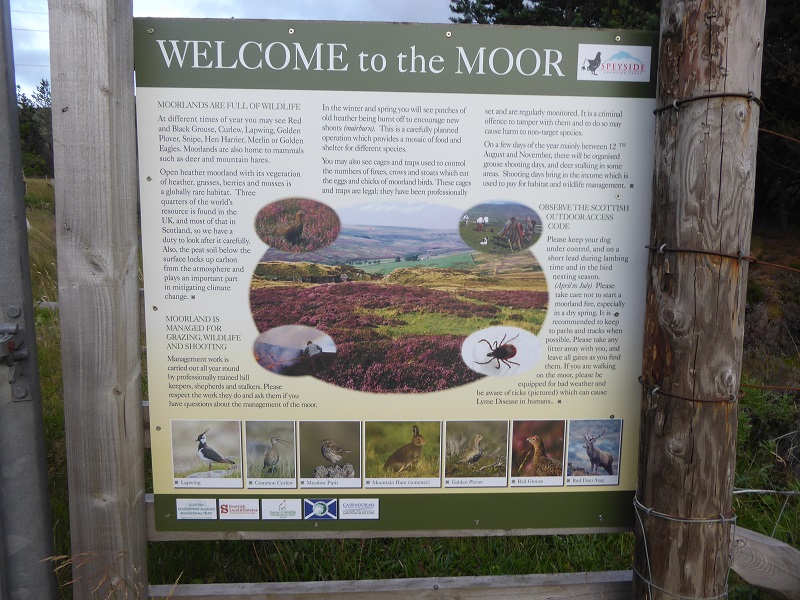
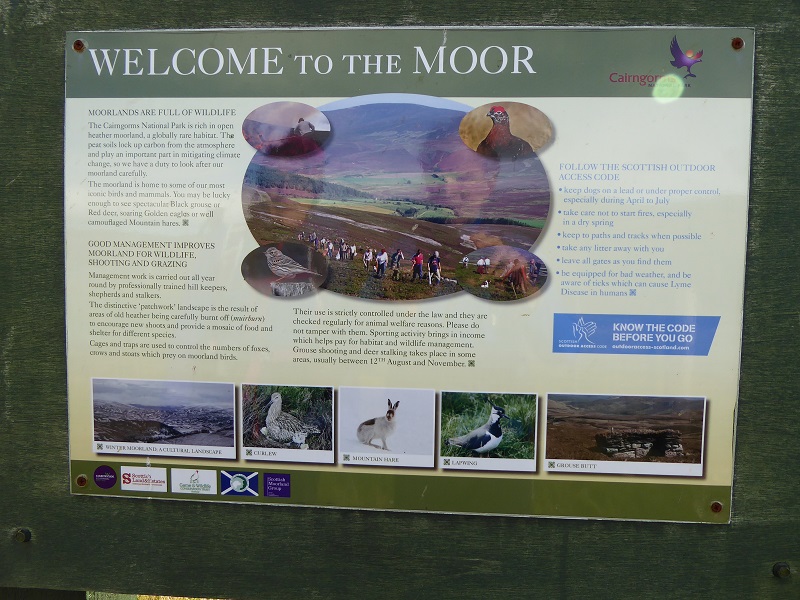
While there is no specific recommended moorland sign from the National Access Forum compare their recommended wording for deer stalking:
“When stalking is taking place, you can help by using paths”
with the messages on the two signs which both say;
“keep to paths and tracks when possible”.
The messages to the public are totally different, the one asking people to help by using paths on certain days and the others recommending people keep to paths at all times.
When I was involved in negotiating the National Access Concordat and the agreement with landowners which preceded our access legislation, we negotiated every word. Initially landowning interests wanted access rights, apart from in open country, to be based on paths as in England, where in many places you have a right to walk along a path but not to step off it. We argued that it was a fundamental right that people should be able to leave paths, whether to go down to a river bank, go and sit under a tree, enjoy a flower or chase butterflies and that people should be able to do this so long as they did not do damage (e.g trample crops). In the end the landowners’ representatives conceded this and that is basically why we have access rights to almost all land.
That though has turned out to be only the start of story of the fight to secure access rights. Dave Morris, when Director of Ramblers Scotland, had again to argue over every word in the model signs agreed by the National Access Forum posted above and below:
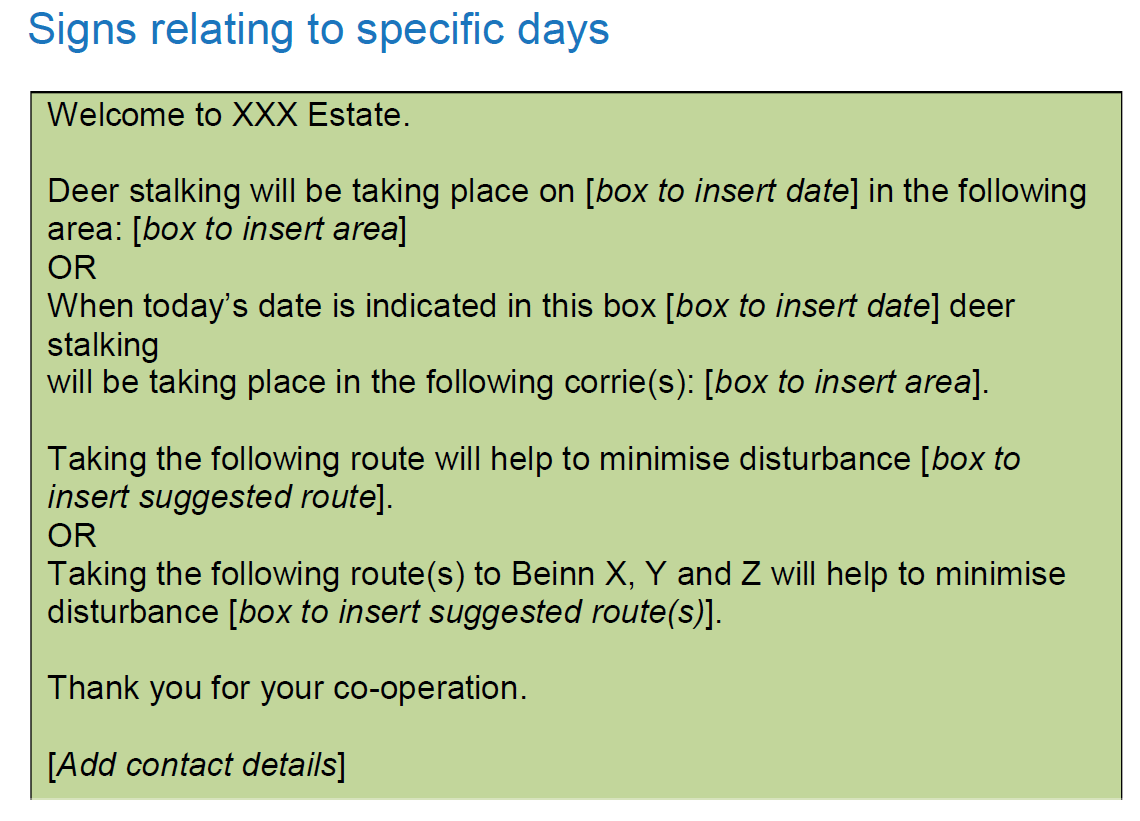
Neither of these agreed sign templates from the National Access Forum use the phrase “Keep to the Path”. This is not an accident or omission, its fundamental. So, when one of our National Parks endorses a sign that says “Please keep to the path” they are, whether knowingly or not, helping landowners to undermine access rights once again. What the Welcome to the Moor signs tell us is that certain landowning interests have never been happy with access rights and are using every opportunity they can to reverse them.
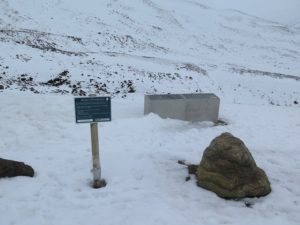
Access rights are NOT about having to walk along a path between two sets of barbed wire fences as in many places in England or on a section of the Speyside Way extension (see here). That is why I was so delighted to see the first Invercauld sign, an example of a landowner doing the right thing. Unfortunately behind the first Invercauld sign is another (left), part of the Scottish Scenic Roads initiative, which uses a slightly different form of wording:
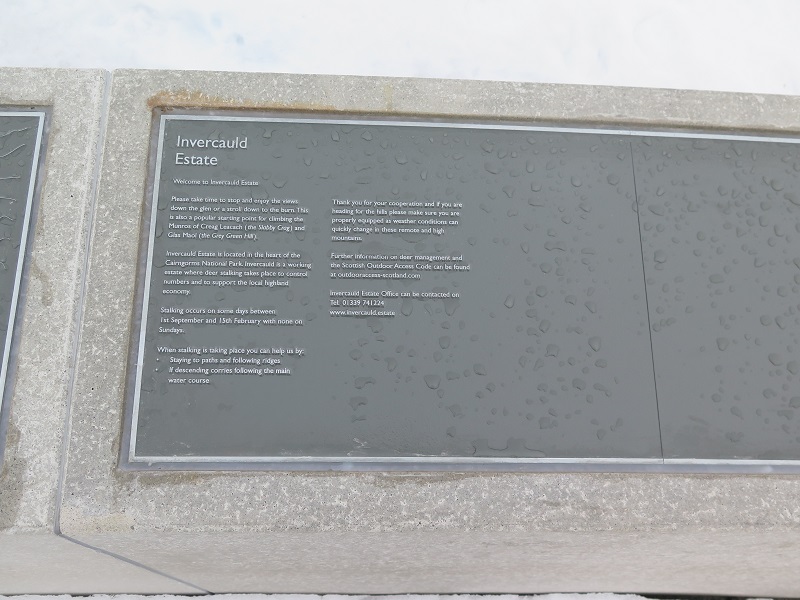
“When stalking is taking place you can help by staying to paths and following ridges”.
Why someone felt the need to reduce the three bullet points in the model National Access Forum signage to two when there is so much empty space on the plaque I don’t know. However, in doing so, they changed the advice from “you can help by using” to “you can help by staying to (sic) paths”:
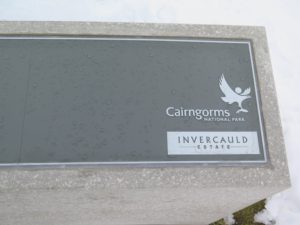
Why the CNPA endorsed this (see left ) I can’t think and it would be in the public interest to know if this was funded by the Scottish Government.
There is an incremental change in meaning from advising people to use paths at certain times, to staying on paths, to keeping to paths…………..and its only a short step from the last message to “don’t leave the path at any time”. Rights are rarely abolished outright, they are lost in increments, often so small you hardly notice.
Words are important which is why its important all who care about access rights challenge the wording on these signs.
Our National Parks have a statutory duty to promote public enjoyment of the countryside and as access authorities should be exemplars of how to manage access rights. The CNPA should therefore require that the Welcome to the Moor signs are changed. The CNPA does not need to reinvent the wheel, all it needs to do – just as it was all the Loch Lomond and Trossachs National Park Authority needed to do on camping – is to follow the excellent National Access Forum advice that is already in place and ensure that landowners do so too.

Some might say you’re being very pedantic – but rights are lost by letting loose language become the norm. One word can have a huge impact – as you clearly demonstrate. It doesn’t require legislation to fix this matter, it requires education. If the national park authority doesn’t even get this right how can they be expected to educate land owners. If the don’t want to get this right then that’s an even more serious matter. As you make clear, this isn’t a matter of one person’s preference or interpretation – it’s a right enshrined in legislation that has taken lots of effort and time to achieve. This is clearly a matter for those who oversee the national parks on our behalf – the Scottish Government.